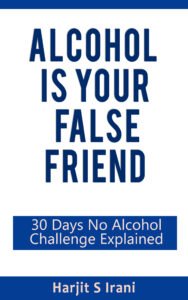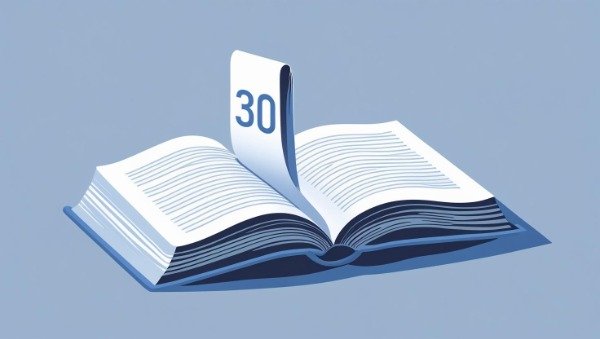How to Speed Read - Proven Techniques
Imagine being able to finish a 300-page novel in a single afternoon or grasp a complex textbook in half the usual time. Whether you are a student preparing for exams, a professional managing lengthy reports, or a passionate reader eager to explore more books, mastering the art of speed reading can be a true game-changer. Slow reading often feels like a barrier to progress. However, with the right techniques, it is entirely possible to double—or even triple—your reading speed while still retaining essential information.
In this comprehensive guide, we walk you through proven strategies to learn how to speed read books, articles, and other materials more efficiently. These methods are designed not only to increase your speed reading, but also to enhance your understanding and enjoyment of what you read.


Table of Contents
- Why Speed Reading Matters
- Core Techniques to Speed Read
- Eliminate Subvocalization
- Master Chunking
- Use a Visual Guide
- Preview the Material
- Tailored Strategies for Different Texts
- Speed Reading Fiction
- Speed Reading Textbooks
- Speed Reading Long or Dense Books
- Boosting Retention While Speed Reading
- Overcoming Common Speed Reading Challenges
- A Plan to Speed Read a Book in One Day
- Conclusion: Start Your Speed Reading Journey
- Frequently Asked Questions (FAQ)
Why Speed Reading Matters
Slow reading can often hold you back. Whether you are trying to finish a textbook before an upcoming exam or struggling to keep up with your book club’s latest selection, speed reading, is not merely about turning pages faster. It is about efficiently processing information, understanding it clearly, and retaining key points.
Research shows that the average person reads at a speed of 200 to 250 words per minute (WPM). However, with consistent practice, it is possible to increase that rate to 400–700 WPM or even higher, as demonstrated in studies conducted by the University of Cambridge.
Whether you are a student, a busy professional, or an enthusiastic reader, mastering how to speed read books can help you save valuable time, enhance your productivity, and unlock new opportunities for learning. From science fiction novels to dense financial reports, these techniques will empower you how to speed read quickly, effectively, and with confidence.
Core Techniques to Speed Read
Eliminate Subvocalization
Subvocalization is to silently pronouncing each word in your head as you read. It can significantly slow you down, capping your reading speed at the pace of your internal speech, typically around 150–200 words per minute. While this habit helps with comprehension at times, it becomes a barrier when you’re aiming to read more efficiently.
To truly speed read a book, you need to train your brain to recognize words visually, much like how you process images. One effective way to reduce subvocalization is by softly humming or repeating a neutral sound (like “la-la-la”) while reading. This distracts the vocal part of your brain, helping you break the habit of mentally vocalizing every word.
Another powerful technique is to focus on scanning for keywords—nouns, verbs, and concepts that carry meaning—while skipping filler words like “the,” “and,” or “but.” For instance, when reading a novel, let your eyes move quickly over descriptions and instead lock onto action-driven verbs and names that drive the plot forward.
With just 10 minutes of daily practice, you will begin to notice a measurable improvement in both speed and comprehension. It is not about reading less thoroughly but about reading smarter.
Master "Chunking Method"
One of the most effective techniques on how to speed read is chunking—grouping words together into meaningful clusters instead of reading one word at a time. This method helps reduce the number of eye movements per line and trains your brain to process language more efficiently.
Instead of reading each word individually, aim to capture 3 to 5 words at a glance. For example, take the sentence “The hero raced through the forest.” Rather than reading word by word, divide it into two chunks: “hero raced” and “through forest.” Your eyes and brain can process these short phrases much faster than isolated words.
To practice chunking, start with a news article or a familiar book. As you read, widen your gaze to cover more words in each fixation, gradually increasing the size of your chunks. Don’t worry if comprehension feels harder at first. Your brain will adapt with consistent practice.

Use a Visual Guide to Stay on Track
Preview the Material
Before you start reading in depth, take a few moments to preview the material. Skimming through the table of contents, headings, subheadings, and summaries gives you a clear idea of the structure and flow of the content. This is one of the simplest step to speed read a book. It helps your brain anticipate what’s coming, making it much easier to absorb and retain key information as you read.
For instance, when approaching a nonfiction book, begin by reading the introduction and conclusion. These sections often highlight the main arguments or key takeaways. Next, glance through chapter summaries or bolded points to identify the most important concepts.
By doing this, you are essentially priming your brain to focus on what matters, filtering out less relevant information, and preparing yourself to read more purposefully. This is especially helpful when you are short on time or tackling a complex topic.
Previewing isn’t about skipping content, it is about creating a mental roadmap so you can navigate the text more efficiently. It is a cornerstone of smart, strategic speed reading.
Tailored Strategies for Different Texts
Not all reading material is created equal—and neither should your approach be. Different types of texts require different strategies to read both efficiently and effectively. Whether you are diving into a gripping novel, studying from a dense textbook, or tackling a lengthy non-fiction volume, tailoring your speed reading technique to match the content is key to success.
Here is how to adapt your speed reading method based on the type of material:

Speed Reading Fiction
When reading fiction, the goal is often to follow the narrative, understand character development, and enjoy the flow of the story. Focus on keywords and action phrases, and allow your eyes to glide through descriptive passages more quickly. Since fiction typically has a linear structure, it is easier to scan through certain sections without losing the plot. Avoid subvocalization to maintain momentum and stay immersed in the story.
Speed Reading Textbooks
Textbooks are dense with information, charts, and complex explanations. Start by previewing chapter summaries, headings, and learning objectives. Use a visual guide to keep your pace steady, and focus on understanding concepts over individual words. Pay attention to bolded terms, definitions, and diagrams. They often hold the core information. Revisit important sections selectively rather than re-reading the entire page.
Speed Reading Long Nonfiction or Academic Books
For long-form nonfiction or academic works, speed reading is about strategic scanning. Read the introduction and conclusion first to understand the main thesis. Then, skim chapters for key arguments, paying close attention to topic sentences, bullet points, and highlighted quotes. Don’t aim to absorb everything. Focus on extracting the insights most relevant to your purpose for reading.
By aligning your reading style with the type of text, you will not only read faster but also comprehend more and retain the information longer. Speed reading is most effective when it is flexible and responsive to the demands of the content in front of you.
Boosting Retention While Speed Reading
Reading quickly is only valuable if you truly understand and remember what you have read. Speed without comprehension is like skimming the surface without ever diving in. To ensure that you are not just turning pages but also retaining valuable information, it is essential to combine speed reading with simple yet effective comprehension strategies.
Here is how to retain when you speed read a book, while maintaining a faster pace:
- Take Quick Notes: Jot down 1–2 key points per chapter in a notebook or a digital tool like Notion. This helps solidify important information and creates a quick reference you can revisit later.
- Summarize Mentally: After each section or chapter, take a brief pause, say about 10 seconds. It helps you to mentally recap what you just read. This moment of reflection reinforces memory and helps link ideas together.
- Ask Questions: Stay mentally engaged by asking yourself questions like, “What’s the author’s main argument here?” or “Why is this point important?” This technique, known as active recall, has been proven to significantly enhance understanding and long-term memory retention.
By integrating these strategies into your speed reading practice, you will ensure that you’re not just reading faster, but also reading smarter.
Overcoming Common Speed Reading Challenges
Like any skill, speed reading comes with its own set of challenges. From losing focus to struggling with comprehension, these hurdles can slow down your progress if not addressed properly. Fortunately, with a few smart strategies, you can overcome these obstacles and continue to build both speed and retention.
How to tackle the most common speed reading challenges:
- Distractions:
External interruptions and mental clutter can derail your concentration. To stay focused, read in a quiet, dedicated space—preferably free from screens and background noise. Use productivity tools to block distracting websites and app notifications during reading sessions. - Comprehension Loss:
Speed means nothing if you don’t understand or remember what you have read. To combat this, pause every 10–15 minutes to mentally or physically summarize key ideas. This not only reinforces learning but ensures you are truly engaging with the material as you speed read a book or article. - Fatigue:
If you speed read a book at a fast pace, it can be mentally exhausting, especially for longer sessions. Avoid burnout by taking 5-minute breaks every 45 minutes. Use this time to stretch, hydrate, or briefly rest your eyes. Regular breaks help you maintain energy and prevent your focus from fading.
By recognizing these common pitfalls and proactively addressing them, you will set yourself up for lasting success in your speed reading journey. Remember, consistency and mindful practice are key to long-term improvement.
A Plan to Speed Read a Book in One Day
Want to speed read a book in just one day? With the right strategy and focus, it is absolutely achievable. Whether you are preparing for a presentation, exam, or simply want to absorb a book quickly, this structured plan helps you stay on track without sacrificing comprehension.
Here is a step-by-step breakdown for speed reading a 300-page book in one day:
- Morning (2 Hours): Set the Foundation
- Skim the table of contents, headings, and summaries to get a clear overview of the book’s structure.
- Begin reading the first 75 pages using chunking techniques and a visual guide (like your finger or a pen) to keep your eyes moving steadily.
- Focus on main ideas—don’t get stuck on every word or sentence.
- Midday (2 Hours): Dive Into Key Content
- Read the next 75 pages, targeting core chapters or the sections most relevant to your goals.
- Continue using chunking and minimize subvocalization.
- Take a 15-minute break after this session to rest your eyes and reset your focus.
- Afternoon (3 Hours): Power Through the Rest
- Complete the final 150 pages, skimming non-essential or repetitive sections.
- Focus on action points, summaries, and highlighted text.
- Jot down key insights as you go—use a notebook or an app like Notion for quick reference.
- Evening (30–45 Minutes): Review for Retention
- Revisit your notes and mentally summarize each major section.
- Reflect on the author’s key arguments and how they connect.
- Optionally, discuss the content with someone or teach it briefly—teaching is one of the best ways to reinforce what you’ve learned.
With this time-blocked, focused approach, you can confidently speed read an entire book in a single day—while still retaining the information that matters most.
Conclusion: Start Your Speed Reading Journey Now
Mastering the art of speed reading opens the door to a world of knowledge, productivity, and personal growth. By applying these proven techniques—such as reducing subvocalization, chunking text, guiding your eyes, previewing material, and tailoring your approach to different types of content, you will be well-equipped on how to speed read books of any kind, from novels and textbooks to lengthy academic works.
Remember, you don’t have to overhaul your reading habits overnight. Start small, stay consistent, and practice a little each day. As your skills improve, you will notice your reading speed increase, without losing comprehension or enjoyment.
Speed reading isn’t just a skill. It is a superpower that can transform the way you learn, work, and grow.
So why wait? Start your speed reading journey today and experience the difference for yourself. And when you do, don’t forget to share your progress below, you just might inspire someone else to do the same.
If you are just getting started, these answers can guide you through the most common questions and challenges. Speed reading is a skill anyone can learn—with the right techniques and consistent practice.
Frequently Asked Questions (FAQ)
What is the fastest way to learn how to speed read?
The fastest way to learn is by practicing core techniques like chunking and eliminating subvocalization for 10–15 minutes daily. Tools like Spreeder can help you develop speed and improve word recognition by displaying text in timed chunks.
Can I speed read a book and still understand it?
Yes! Speed reading is effective when combined with active recall strategies, such as mentally summarizing key points or jotting down quick notes. Cognitive research shows this greatly improves comprehension and long-term retention.
How long does it take to speed read a 300-page book?
If you’re reading at around 400 words per minute, a 300-page book typically takes about 4 to 5 hours. You can follow our one-day speed reading plan to manage your time and energy effectively while retaining what you read.
What are the best apps to speed read books?
Apps for practicing and applying speed reading techniques.
Spreeder for training your speed and eye movement
Kindle App for customizable reading settings
Blinkist for quick, 15-minute nonfiction summaries
Each tool caters to different needs and can help reinforce your speed reading habits.
How do I speed read a textbook without missing key details?
Use structured techniques like the SQ3R method (Survey, Question, Read, Recite, Review), and focus on headings, summaries, and highlighted terms. These help you absorb the most important content without getting overwhelmed by detail.
Can I speed read fiction like novels?
Absolutely! When reading fiction, you can skim over detailed descriptions and focus on plot, dialogue, and character development. This helps maintain the narrative flow while significantly increasing your reading speed.





